Hyundai Venue review & buyer's guide
Venue is the new kid on the small SUV block. A budget option for a modern, safe and entertaining first car for the kids. So, do you bother taking a test drive or drive past? Let’s unpack that…
First Impressions
Consumers want SUVs for all the purported reasons they can muster up - from ride height to allegedly better vision to the misguided notion of additional cabin and storage space - you name it. People will find an excuse to get one.
So, Hyundai has added another small/light SUV to the mix, in the same market category as the Kona, in the same way Mitsubishi sent the Eclipse Cross in to compete with the ASX and the rest of the competition.
Let’s look at Venue in its own right, because it’s priced so sharply, it flicks the bird to the notion of buying second hand to get the brood into their first car. You get reasonable boot stowage, space for four and a half average-sized adults, and an economical engine driving the front wheels only. But the kids will just want to know there’s smartphone connectivity and a charging outlet.
You on the other hand, will be glad to know Hyundai has also stuck core crash-avoidance features like automatic braking and lane-keeping on the base model.
When they finally leave home, you’ll be glad to know there’s 100kg of payload available using the roof rails, which compensates for a towing capacity not worth knowing about. You can actually put more weight on the roof than downball weight on the towbar. Horses for courses.
This is a bare-boned, stripped back Kona, in a sense, with only the critical features you want in a small SUV, specifically for those of you strapped for cash in this recession-like landscape. Here’s how to save thousands on a new car in 2020 >>
I mean, the range starts at $20k and stops before $30k. If you still stubbornly refuse to get you, the mother-in-law or your kids out of that piece of crap old car with no crumple zones, ABS or even airbags, then you really need some professional counselling. We’ll get to the Venue’s safety aspects shortly.
The range
Venue Go
When a carmaker boasts standard features like six airbags, cruise control and four speakers, you immediately recoil and think it’s a 1990s game show and Larry Emdur is due on stage any second now. But respectably enough, Go does start with some essentials.
Apple CarPlay and Android Auto are standard, rightly so in 2020, and so too is a reversing camera, which is pretty normal fare these days.
Tyre pressure monitoring is also a plus, but the 15-inch steel wheels - with complimentary hub caps - will have fleet managers nodding with glee. The striking Tim Burton paint palettes aren’t on the base model, which could be seen as a win.
Venue Active
An additional $2000 gets you only a few extras, the most exciting of which is alloy wheels - instead of the poverty-pack steel wheels - and rear parking sensors which should prove useful if your kids do ever actually learn to reverse parallel park. Which they should.
As well as two additional speakers there’s some leather offcuts sewn around the steering wheel and transmission shifter.
Venue Elite
It’s your lucky day, Venue buyer. Not only does the Elite get the funky colour mix-n-match thing, you get satnav (even thought smartphone intergration is already standard). And, if you still listen to it, digital radio too.
Plus, there’s a bigger set of wheels, climate control, extra tinting on the back windows (marketed as privacy glass), there’s a USB port (that;s right, singular), oh, and an armrest on the centre console to rest your weary bones.
The powerplant
It’s Hyundai’s well-known 1.6-litre four-cylinder, except unlike the fire-spitting N cars designed to embarrass Golf GTIs, you’re looking at the production of a more modest 90kW @ 6300RPM and 151Nm @ 4850RPM, and with a maximum kerb weight of 1225kg, you get a 75.1 kW/t power-to-weight ratio.
That 1225kg kerb weight means all the essentials remain and the unnecessary weight of leather seats, electrical seat motors, bigger wheels, reams of additional copper for cabling of automated features, heavy all-wheel driveline components like couplings and shafts, are sacrificed in the pursuit of lightness.
The result is a swift, pocket-sized SUV - if you can even use that acronym anymore - which isn’t laboured by a long features list. Before you drop your hard-earned cash, here’s how to buy the right SUV for you and your kin >>
They’ve stuck with a conventional epicyclic automatic transmission with torque converter, instead of the more efficient CVT option, which means anybody looking for that perceived driving experience known as 'stuff happening’ will appreciate the climbing revs, the drama of noise and rudimentary engineering, and the ability to select ratios will delight, especially kicking the clutch pedal in the manual base-model Go.
But let’s be honest here, it was probably an accounting decision and to differentiate the Venue away from the Seltos. The same can be said for de-tuning the engine. You can also ask yourself just how crucial it is to have more power: I’d suggest less is more if you’re barking up this small SUV tree. Your elderly mother will still think it’s a rocket ship.
Features & pricing
The Venue isn’t burdened with any of the frivolous, materialistic stuff we’ve come to expect from cars in the modern era. All those bells and whistles most people know are there but seldom use, things like wireless charging, 25 USB ports, endless swathes of hidden leather, on-demand all-wheel drive which gets used in .01% of the vehicle’s entire registered life, and heated/cooled seating - they’re not here. If you want luxury, look elsewhere and expect to pay more for it.
Venue Go - $23K gets you:
Six airbags, 8-inch touchscreen, Apple CarPlay & Android Auto, rearview camera, 15-inch steel wheels, tyre pressure monitoring, collision avoidance package (auto emergency braking, lane-keeping, drive attention warning), auto high beam, roof rails, Bluetooth, cruise control, cloth seats.
Venue Active - $25K adds:
Rear parking sensors, 15-inch alloys, power-folding mirrors with LED side indicators, six speakers, LED daytime running lights.
Venue Elite - $30K driveaway throws in:
DAB+ digital radio, 17-inch alloys, 8-inch satnav with SUNA live traffic, two-tone roof/mirrors, LED rear taillights, rear privacy glass, front USB port, single-zone climate control, centre console armrest. Sunroof, “exclusive single-tone colours”
I'll help you save thousands on a new Hyundai Venue
Just fill in this form. No more car dealership rip-offs. Greater transparency. Less stress.
Imperfections
In one of the most competitive market segments, Hyundai has made the questionable decision not to offer an on-demand all-wheel drive system on the Venue, leaving a front-drive layout the only option against strong-selling rivals like Kia Seltos, Mazda CX-3, Toyota C-HR and, in particular, against the Subaru XV.
Also, consider just how long you can stand the liquorice allsorts two-tone look before it goes stale and all novelty wears off. There’s a reason the most venomous arachnids, amphibians and fauna wear bright skin - to warn against would-be predators.
The sharp-eyed among you may look at Venue’s posture and think, ‘Tough, wide stance, I like that’. But don’t be fooled. That’s the effect of both low-angled expert photography and the fact this car’s fitted with quite narrow tyres - just 205mm wide on the treadface. So it looks wider than it actually is. Compared to 235s on the Seltos, 225s on the ASX and C-HR, and 215s on the CX-3, those skinny rubber bands are coping with mechanical traction both longitudinally and laterally, steering and braking. In the wet, at night, with kids on board?
In a bid to win the price war, there are niceties missing on the Venue which are available on its competitors such as auto rain-sensing wipers, front and side cameras, electronic parkbrake or heated seats, a diesel or hybrid drivetrain option, there’s no CVT or dual-clutch - conventional auto only - and the 1.6-litre turbo-petrol engine shared with Kia Seltos produces less power and torque. Seltos will also tow more despite being based on the same platform.
Leather seats are nowhere to be found, if that’s high on your priority list, but the “premium cloth” is aptly named. Hyundai’s omission of even height adjustment on front seats could be seen as a step too far for the shorter customer.
The Competition
Let’s compare the highest grade versions of the four main rivals to Hyundai Venue, all in turbocharged petrol, all-wheel drive (albeit on-demand) and with all the fruit their respective masters can adorn them with. Here’s how to buy the right SUV >>
Mitsubishi ASX Exceed: Consistently one of the best selling small SUVs in 2019. Six model variants makes for a head-scratching customer. Two uninspiring petrol engines and two transmissions (manual only on base model ES and CVT auto on everything after that), but they’ll do the job if that’s all you want. Definitely aimed at the cheaper end of the market, in both cost and quality. Ride is somewhat rough over the crappiest of Australia’s crap roads, with plastic interior to boot. Recent re-styling job you can judge for yourself.
Kia Seltos GT-Line: Locally tuned suspension, a full-sized spare, a big infotainment screen, live traffic and 10 years of free map updates, more luggage space than most rivals (rear seats up or down), tyre pressure monitoring (like Venue) make Seltos a strong option. Lagging CVT gear changes are a chink in its armour, however. Get’s same feisty 1.6 turbo petrol engine as Venue, but with more power. More conservative - perhaps, less aggressive - styling might be easier on the eyes. Full size spare for those who prefer safety over minimalism. However, you’ll pay a $10k premium over the Venue. Get the full Seltos guide here >>
Toyota C-HR Kobe: I try to avoid commenting on aesthetics because, you have eyes and can interpret design for yourself, but C-HR is undoubtedly the pug of the litter. Drives nice enough and boot space is decent for the category, engine feels mediocre up suburban hills but adequate on flatter roads and highways, especially the heavy hybrid weighing 1590kg (kerb). C-HR is the only option for a hybrid model, but you’ll pay $40k for that privilege and it demands premium fuel. Should you buy a Hybrid SUV? >>
Mazda CX-3 Akari: CX-3 is the only option for a diesel in this group, offering 85kW @ 4000 revs and 240Nm @ 1600-2600rpm, making it a punchy unit for light towing and long-distance driving, especially rural and regional buyers. City dwellers sticking (wisely) to the petrol, will find CX-3 one of the nicest to drive in the group, and one of the best equipped in Akari top-spec. But you’ll pay another $10k more for features like Nappa leather, AWD, electronic park brake, 360-degree camera, traffic signal recognition, adaptive cruise control, heated front seats etc. At least the base model CX-3 offers seat height adjustment and a centre console armrest food goodness sake. Here’s what I thought of CX-3 when it first arrived >>
Utilitarian or underwhelming?
If you’re looking for a small, economical and capable SUV offering all the bells and whistles - but with a greater emphasis on the U in SUV, then the Subaru XV might be a wiser choice. AWD just has to be better, right? Not necessarily >>
Subaru’s symmetrical all-wheel drive won’t shudder at the first sight of impending rain on the dirt road exiting the camping grounds, whereas Venue’s skinny tyres, front-drive layout and 195mm ground clearance can’t beat the XV’s 220mm ride height, X-Mode terrain management system, 225mm tyre width, and 310 litres of boot space (rear seats up).
Make no mistake, the Venue, like most of its competitors, has minimal stowage space at just 233 litres, compared with 433 litres in the Kia Seltos, and 264 in Mazda CX-3. So camping might be restricted to a tent and the bare essentials.
Venue gets an electronic traction mode with three options: mud, snow or sand, which will no doubt go some of the way toward compensating for a lack of on-demand all-wheel drive - a feature which rarely ever gets used in the real world and acts as more of a marketing tool than a gritty soft-roading armament. But there’s no doubt the full-time symmetrical all-wheel drive in the XV would trounce the Venue in any slushy, slopey environment.
XV will happily tow 1400kg of braked trailer where the Venue is out of puff at 800kg with the automatic transmission or 1100kg in the base model manual. Nobody is going to be pitting these two against a Triton or something, but when you need to get a load to the tip or take extra stuff on your travels, the numbers don’t lie.
Venue’s power-to-weight ratio doesn’t lie either, its 75.1 kW/t is no match for the XV’s 79.6 kW/t, and the Subaru offers paddleshift, leather and adaptive cruise.
Of course, you’ll pay another $8000 or so for an XV from base model to top-spec 2.0i-S, so there’s that to consider. Venue is about value and you certainly get that if your objective is to stay firmly in the concrete jungle and rarely touch the gravel backroads.
If you’re tempted to save the cash getting a Venue and doing what the XV can, by taking your SUV off the black stuff, first know this >>
Safe spaces
Hyundai Venue came up somewhat embarrassed by its ANCAP rating in late 2019, which saw mixed results. ANCAP awarded 91% for adult occupant protection, 81% for child occupant protection, 62% for vulnerable road user protection, and 61% again for safety assist technology designed to prevent crashes in the first instance. Get more Venue safety rating details here >>
Venue essentially qualifies for five stars based on all physical crashworthiness criteria - it crashes quite well, counter-intuitively enough - but it’s the safety assist technology which hems the score back to four stars.
To qualify for five stars, the safety assist category would need to see adaptive cruise control added as a minimum - this was most likely a cost-prevention decision made by Hyundai. They could perhaps add a few lines of code for a fatigue reminder (alerting the driver to take a break after two hours of constant driving) and some stronger performance in the autonomous emergency braking (interurban) tests to improve its score above the 70% threshold required by ANCAP to qualify for five stars.
Just because a new car enters the market does not mean you should shut off rational, objective quantification of how it stacks up against other vehicles on sale - especially on safety. Just look at the abhorrent Jeep Wrangler >>.
Don’t ever assume a new car is instantly the safest thing you could drop your money on and put your high school aged kids in to learn to drive. But don’t think the Venue is not safe, it definitely is, there’s just a greater emphasis on the driver mitigating risk than the vehicle’s technology insulating them from those salient risks.
Venue scored pretty well in physical crash tests, despite some neck whiplash (rated as poor) on the 10-year-old dummy, as well as being poor for the rear adult passenger dummy which also suffered marginal chest injury in the full-width frontal crash test at 50km/h. Two rear-facing Type A child seats also don’t install into Venue’s rear ISOFIX points.
Some adequate scores for driver and passenger chest and legs were also recorded,and the forward collision warning scored poorly at night walking along the road in the same direction as the vehicle. But make no mistake, plenty of current or new five-star vehicle tests show some kind of injury to a dummy. This does not mean they’re structually unsafe like a Mustang, Suzuki Jimny or Jeep Wrangler.
If you’ are considering an utter shitbox like the Wrangler, Jimny etc, your own safety, or that of others, is clearly not high on your priority list. Venue’s rivals like CX-3, ASX, C-HR and Seltos all offer 5 star ratings, as does i30.
Conclusion
The Venue certainly is effective in replacing the Accent in every area. It’s undeniably better to look at for starters.
If budget truly is your limiting factor in buying your next new car, and for many it is, then the Venue is a bargain which stops short of the discount bin - even if its plastic interior feels like it was sourced from Solo Resource Recovery’s finest yellow-lid wheelie bins.
Venue will appeal to the young ladies and young-at-heart ducks out there who have probably already bought it in their heads before assessing the objective criteria which would point toward the Seltos or CX-3 as a better option for a fraction more coin. But for those who cannot go above a $30k ceiling, like Charlie and Grandpa Joe, the Venue is an excellent option on safety, value and economical transport for the suburbanites of Australia.
Venue offers the best necessities of living in our modern world of light-emitting diode tablet screens, dee-emming on FaceTwitter and entertaining the romantic idea of glamping, even if you’ll never actually go further than the paved beach carpark.
If running around the city wearing cat-eye John Lennon sunglasses, meeting university besties for coffee and smashed avo while only ever staring at your phone, before heading out for Friday night cocktails and using “like” fifteen times in a sentence, then the Venue should be on your list.








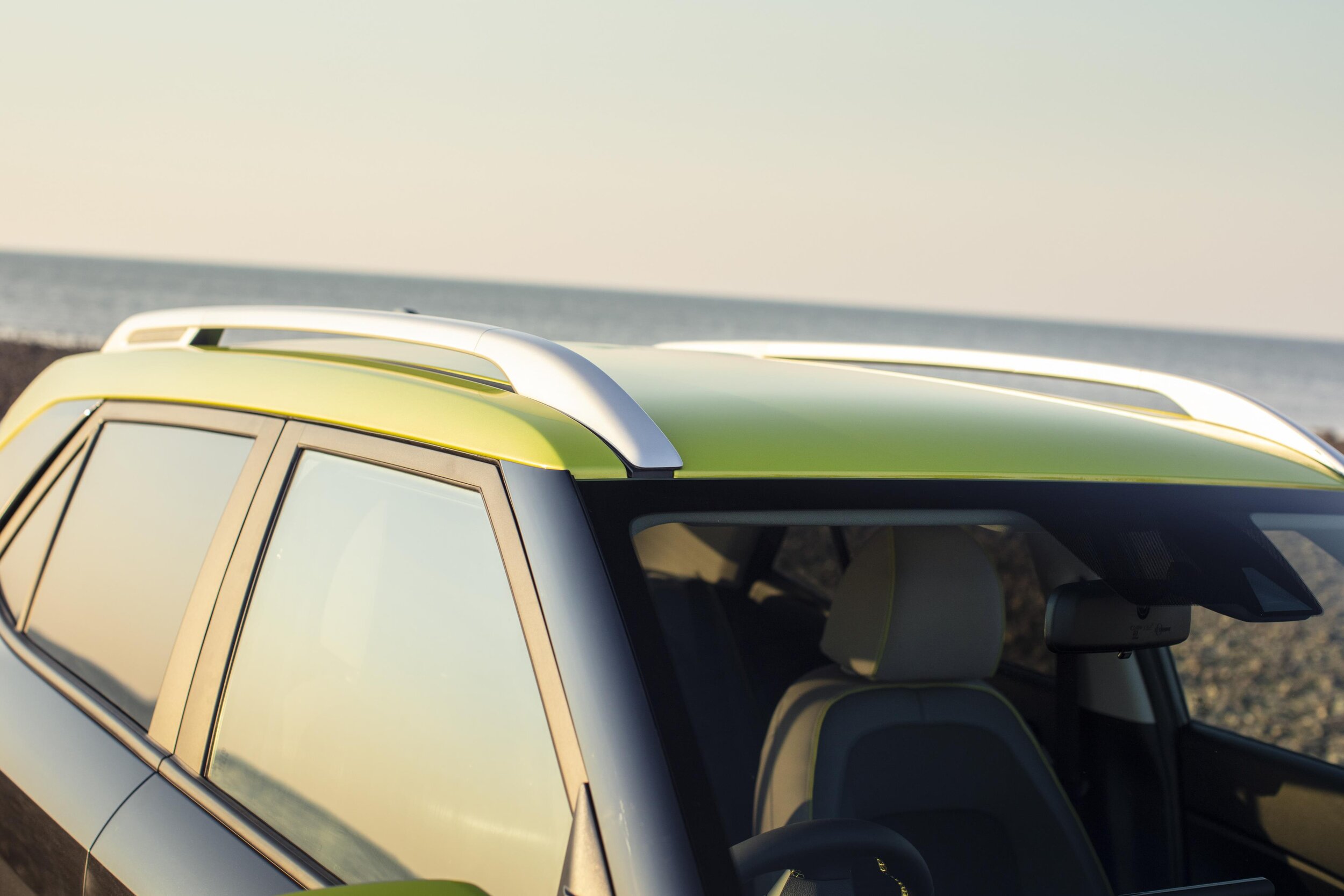
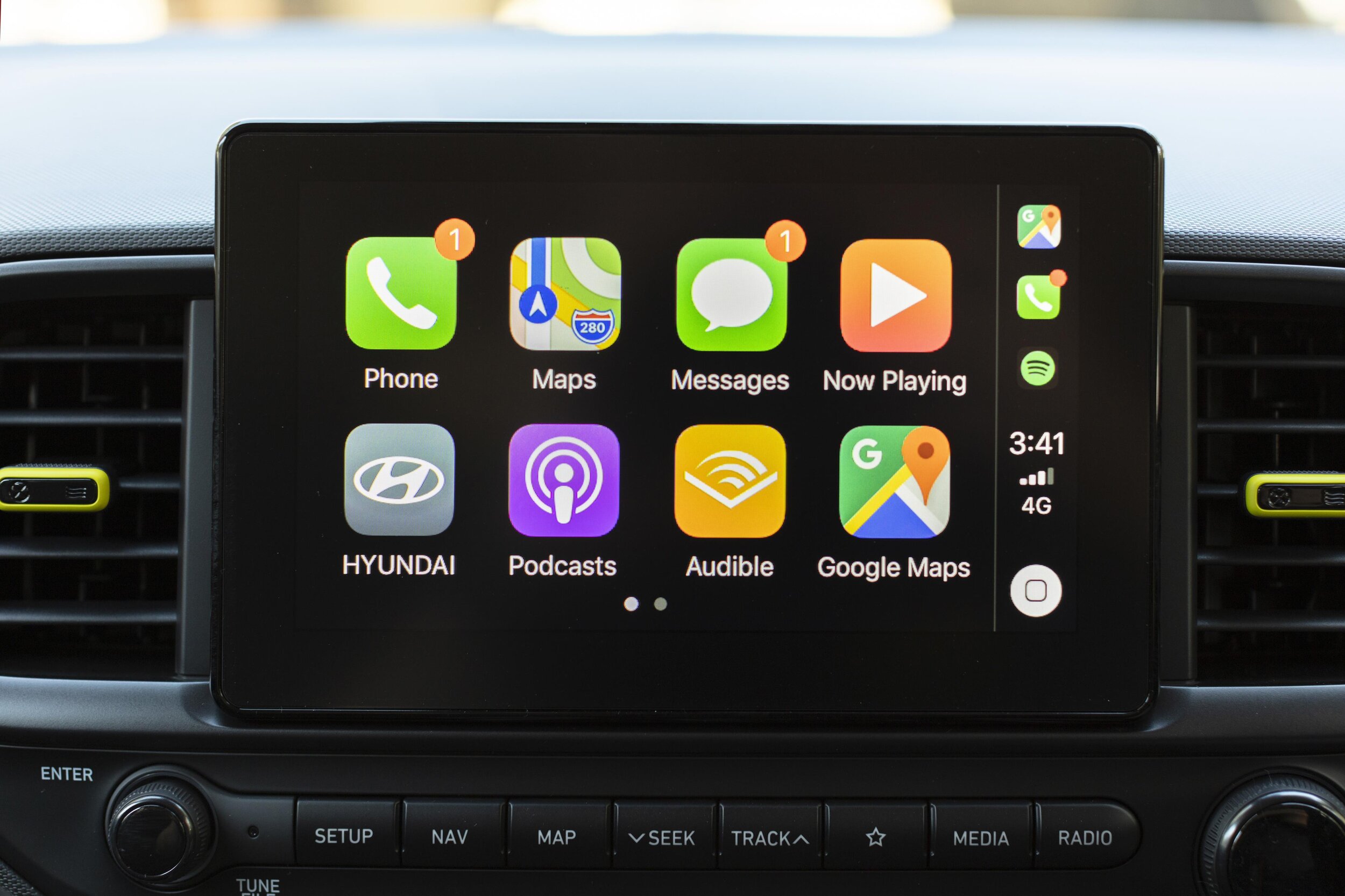
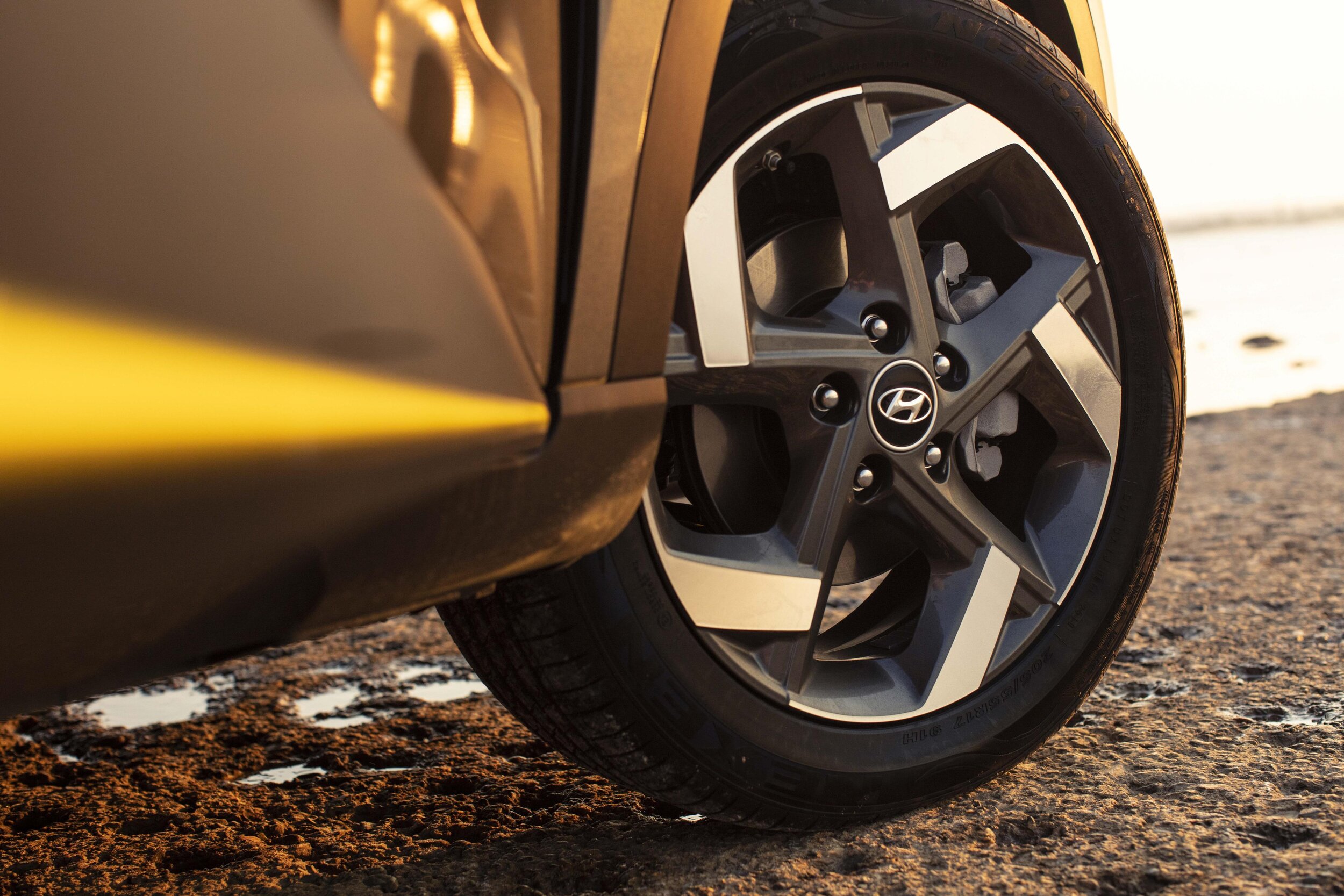
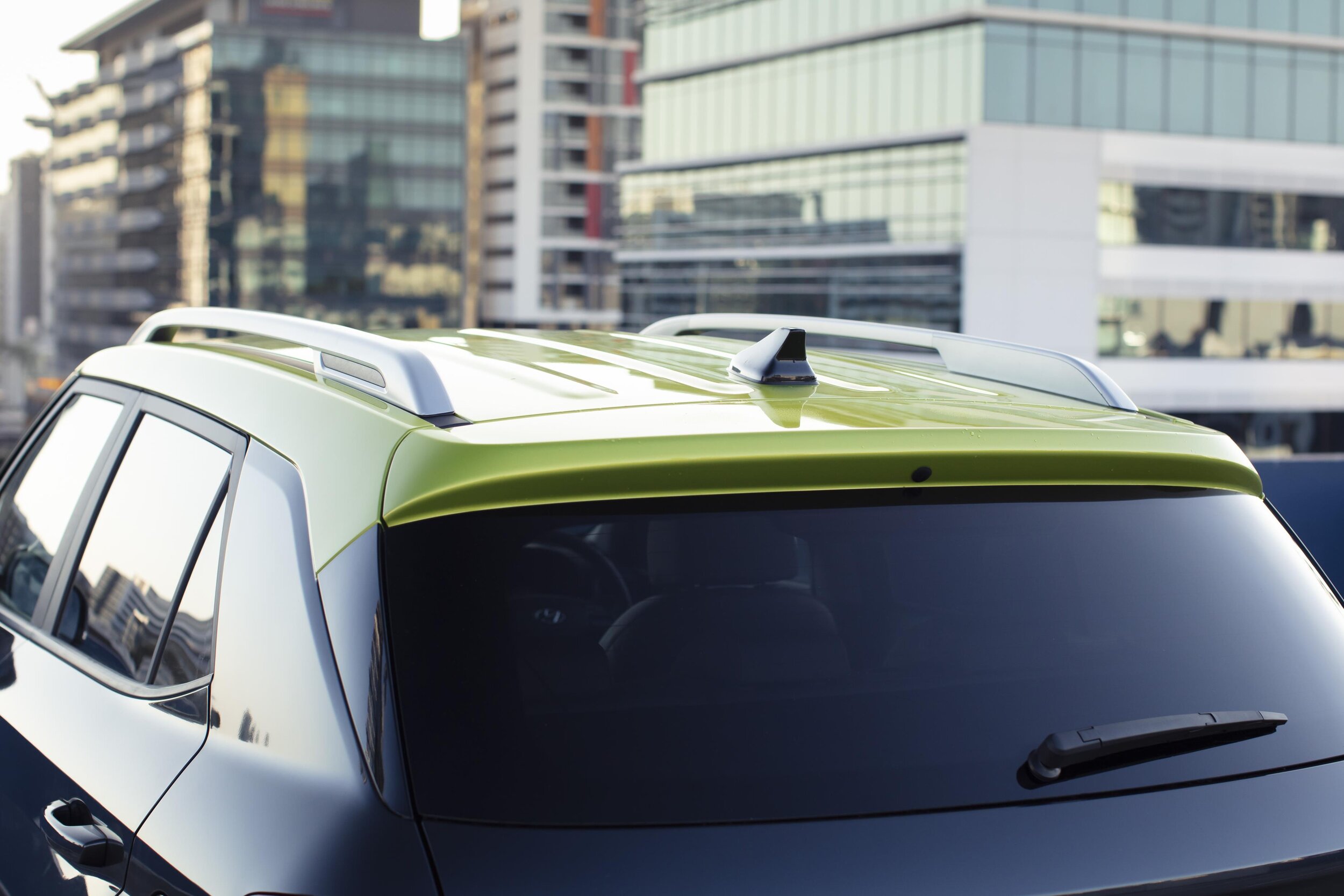

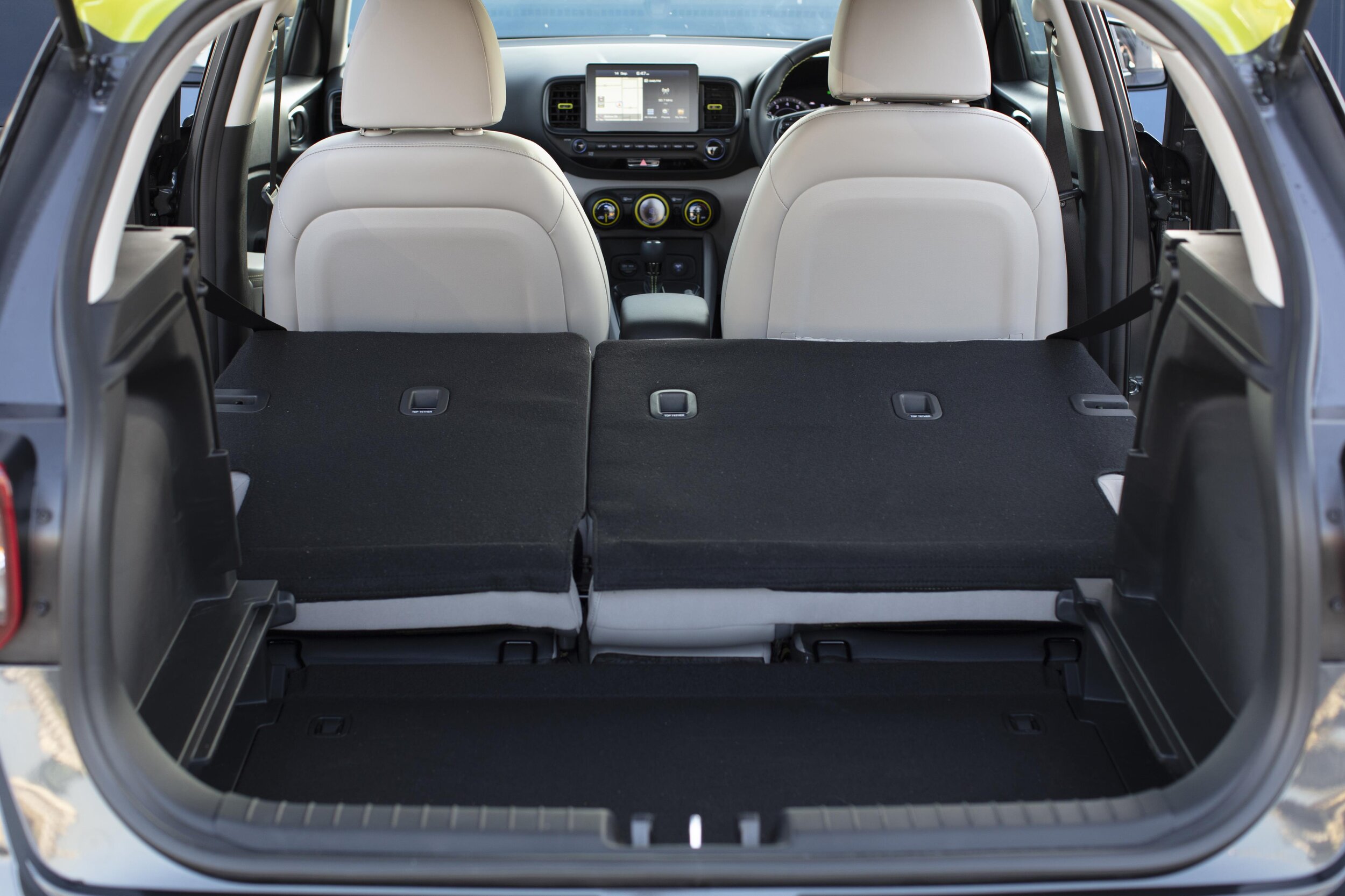
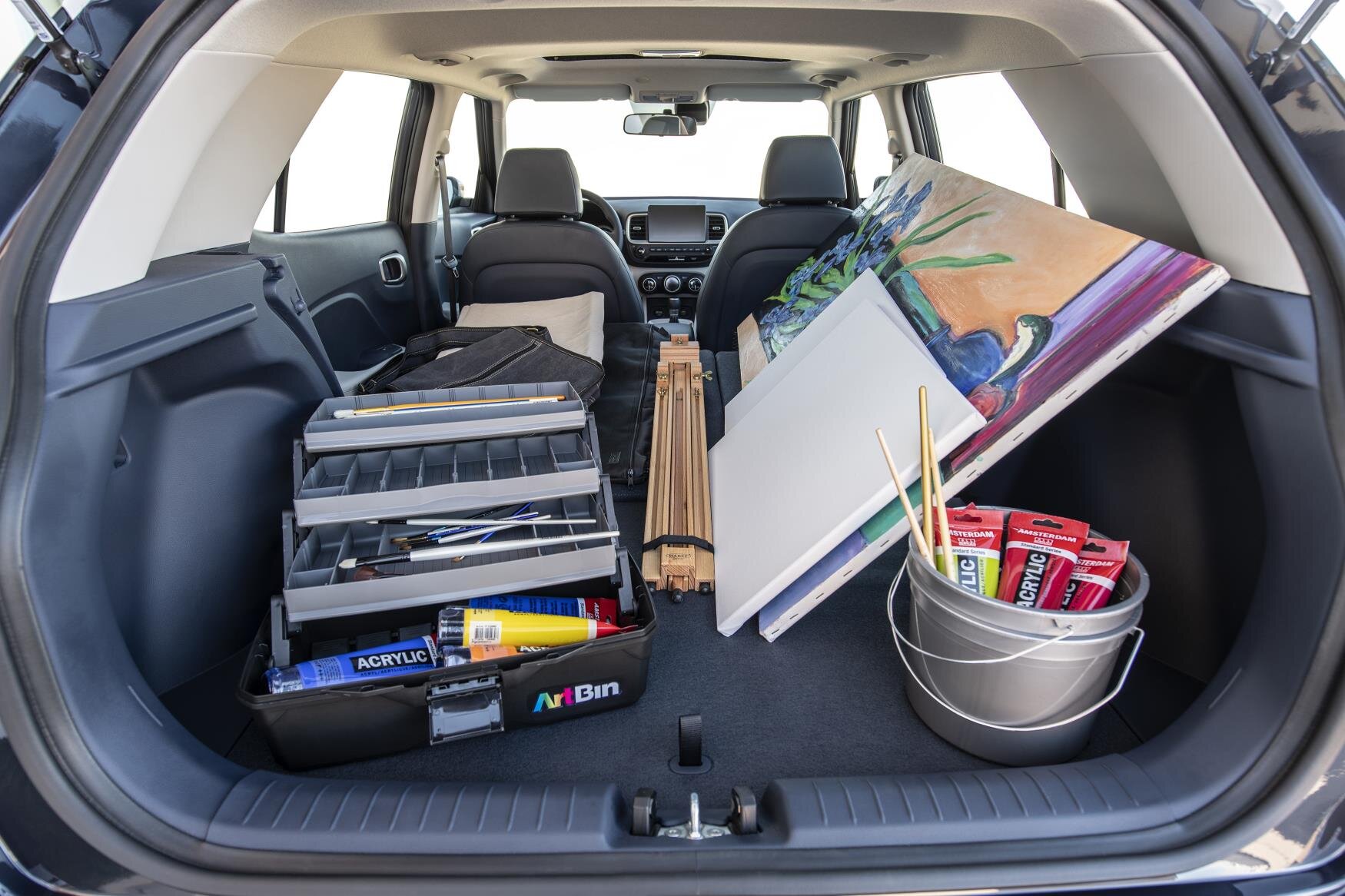
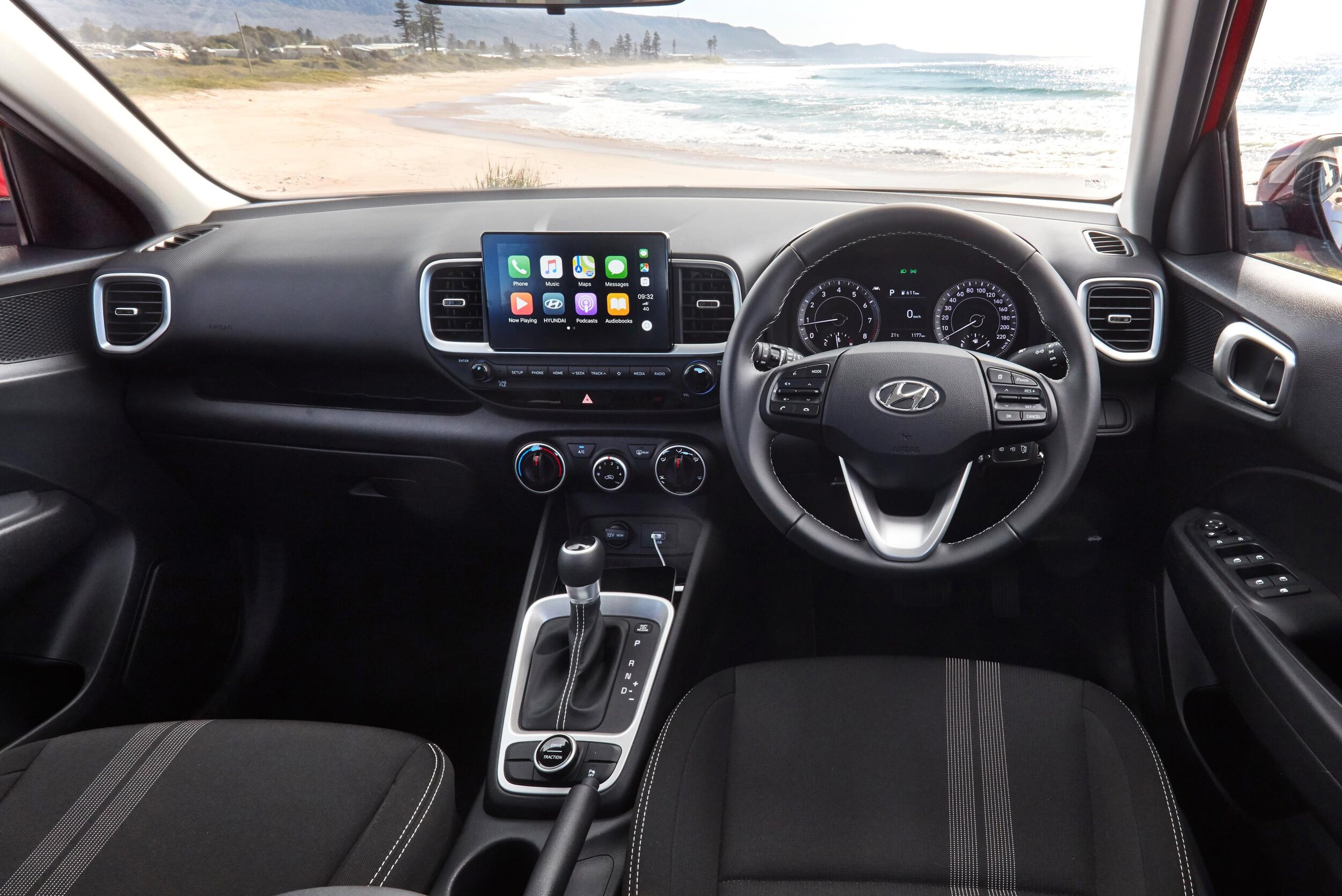
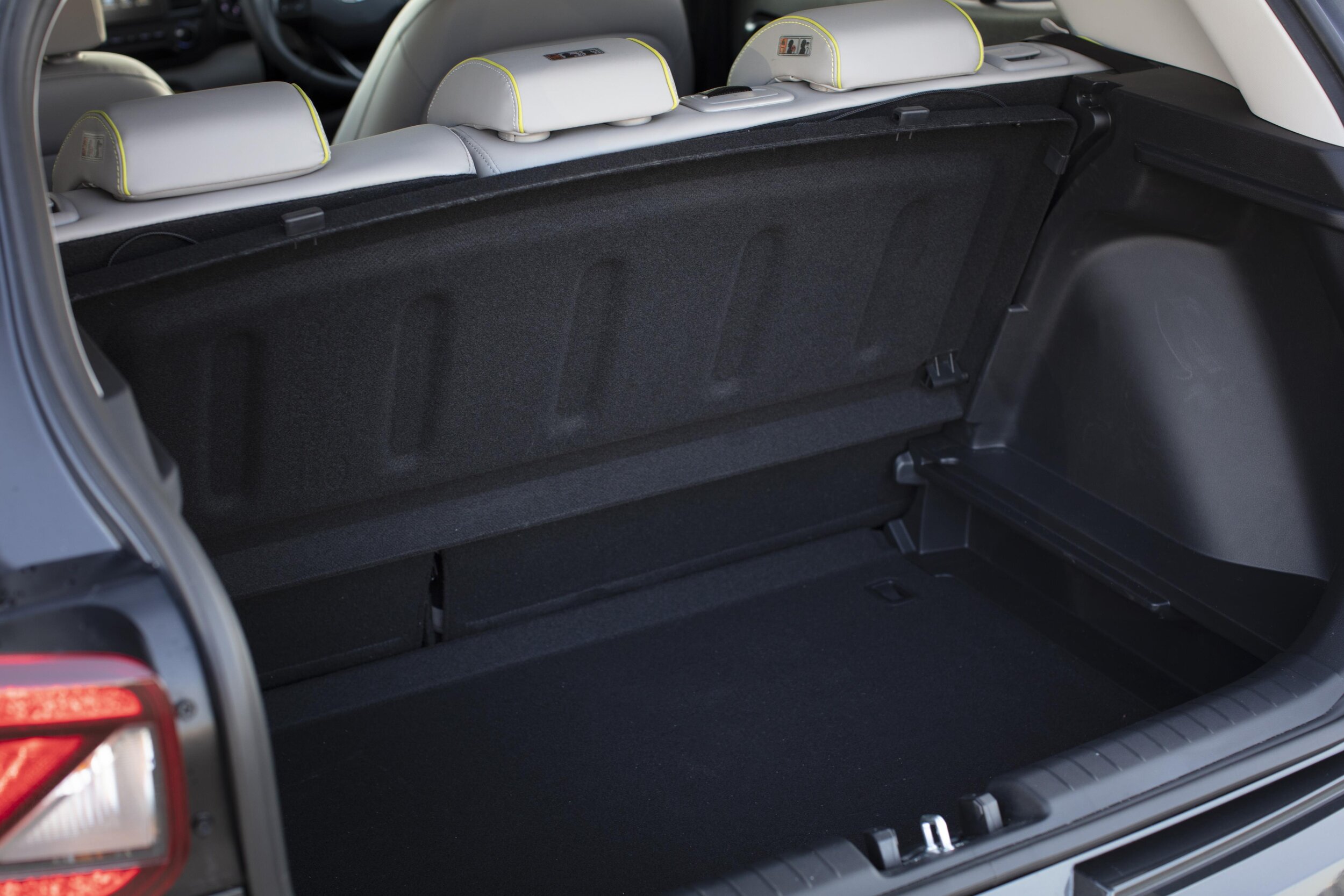


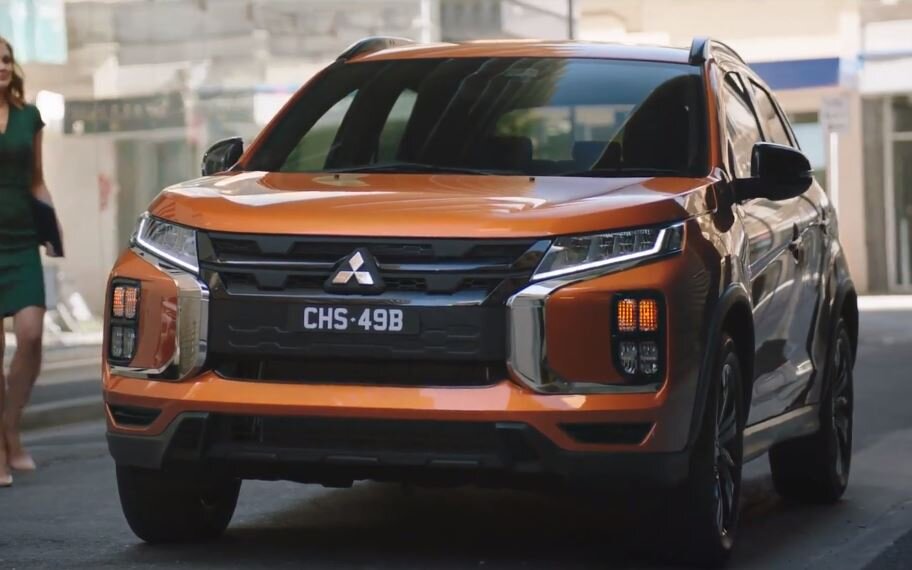
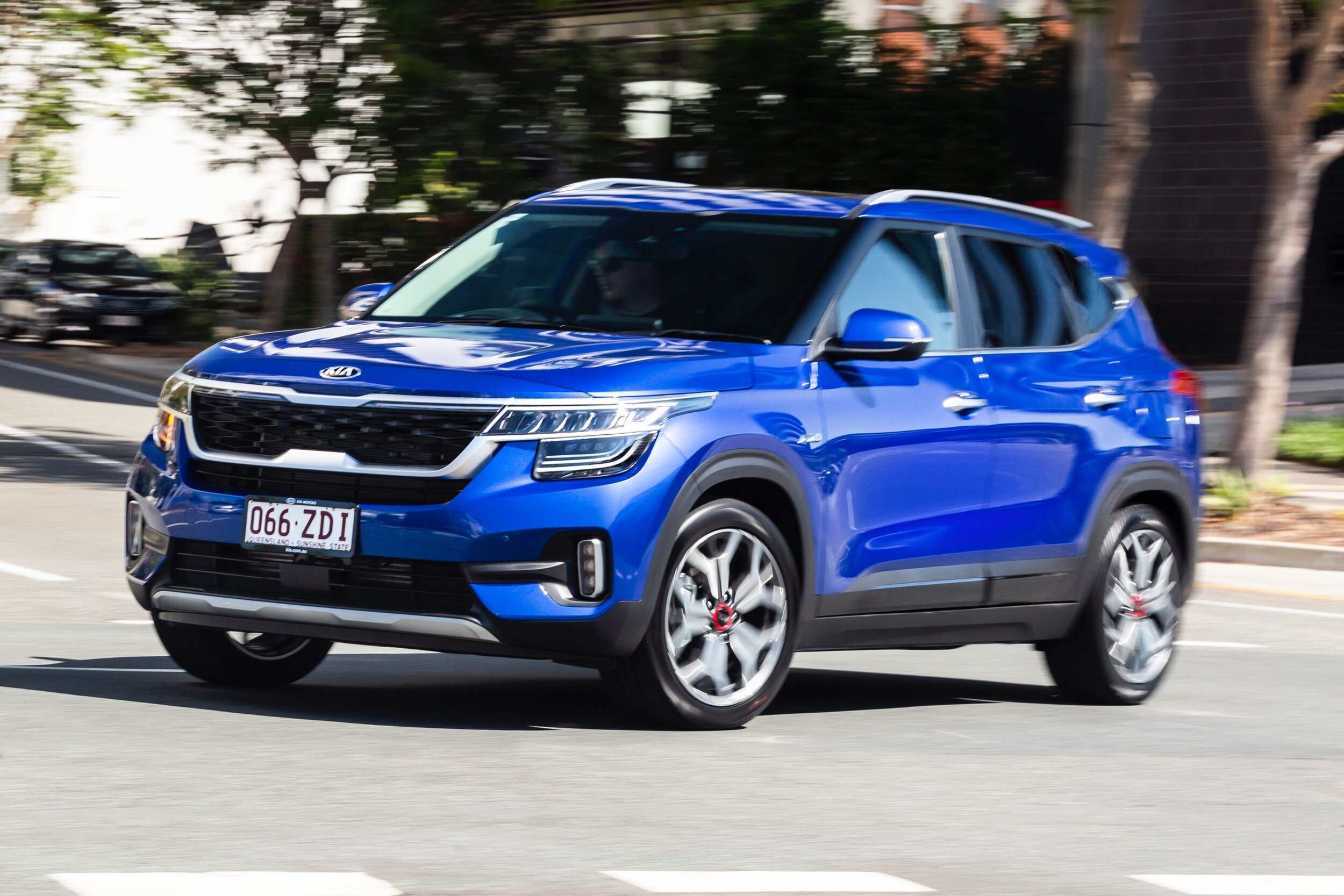
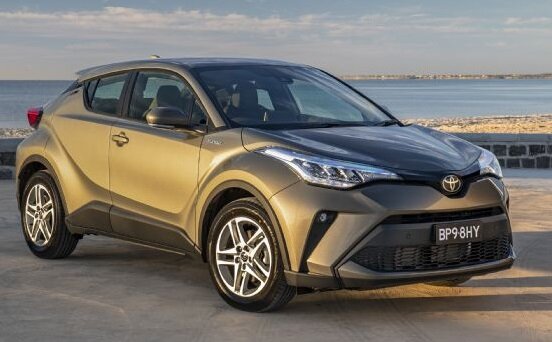
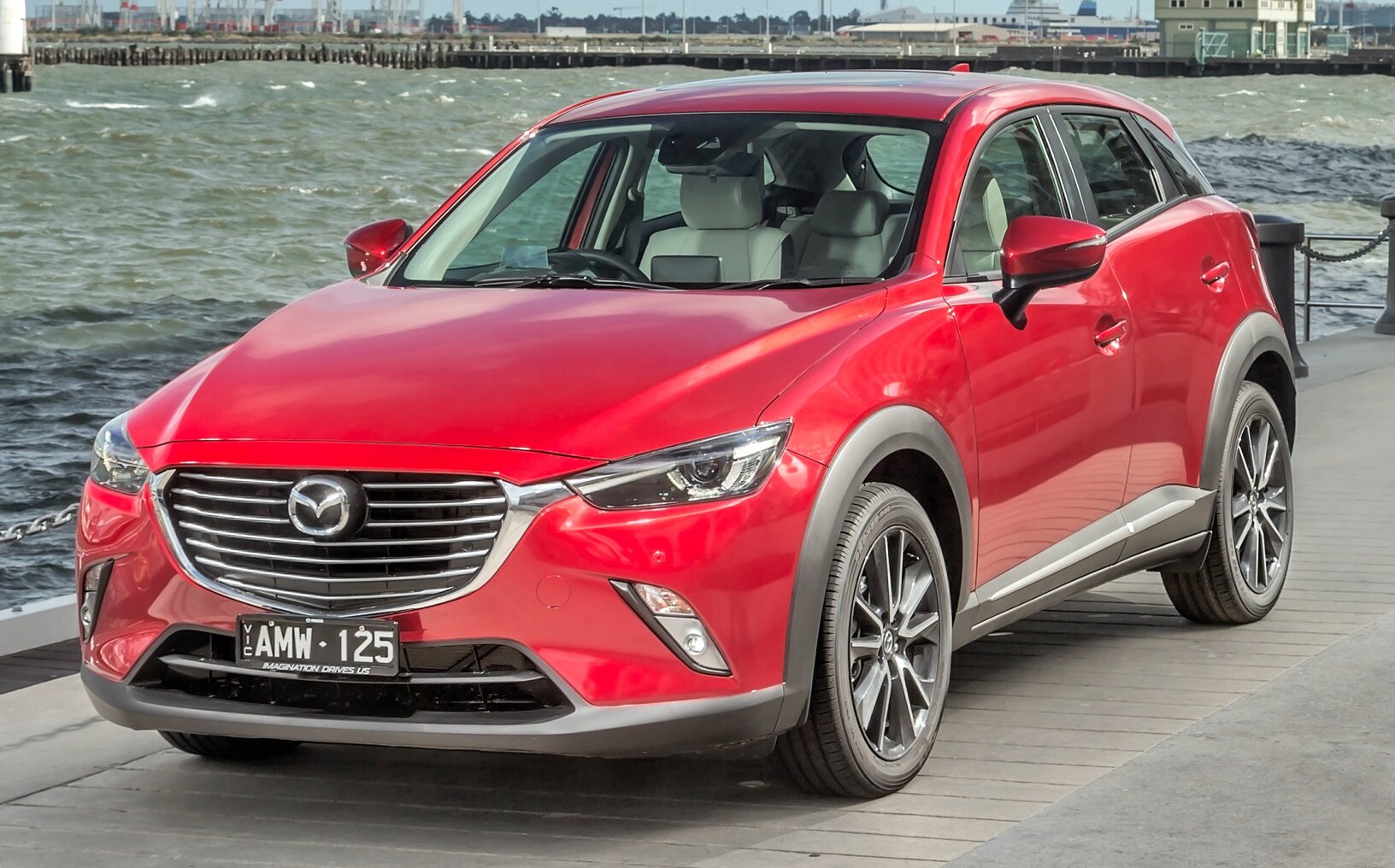
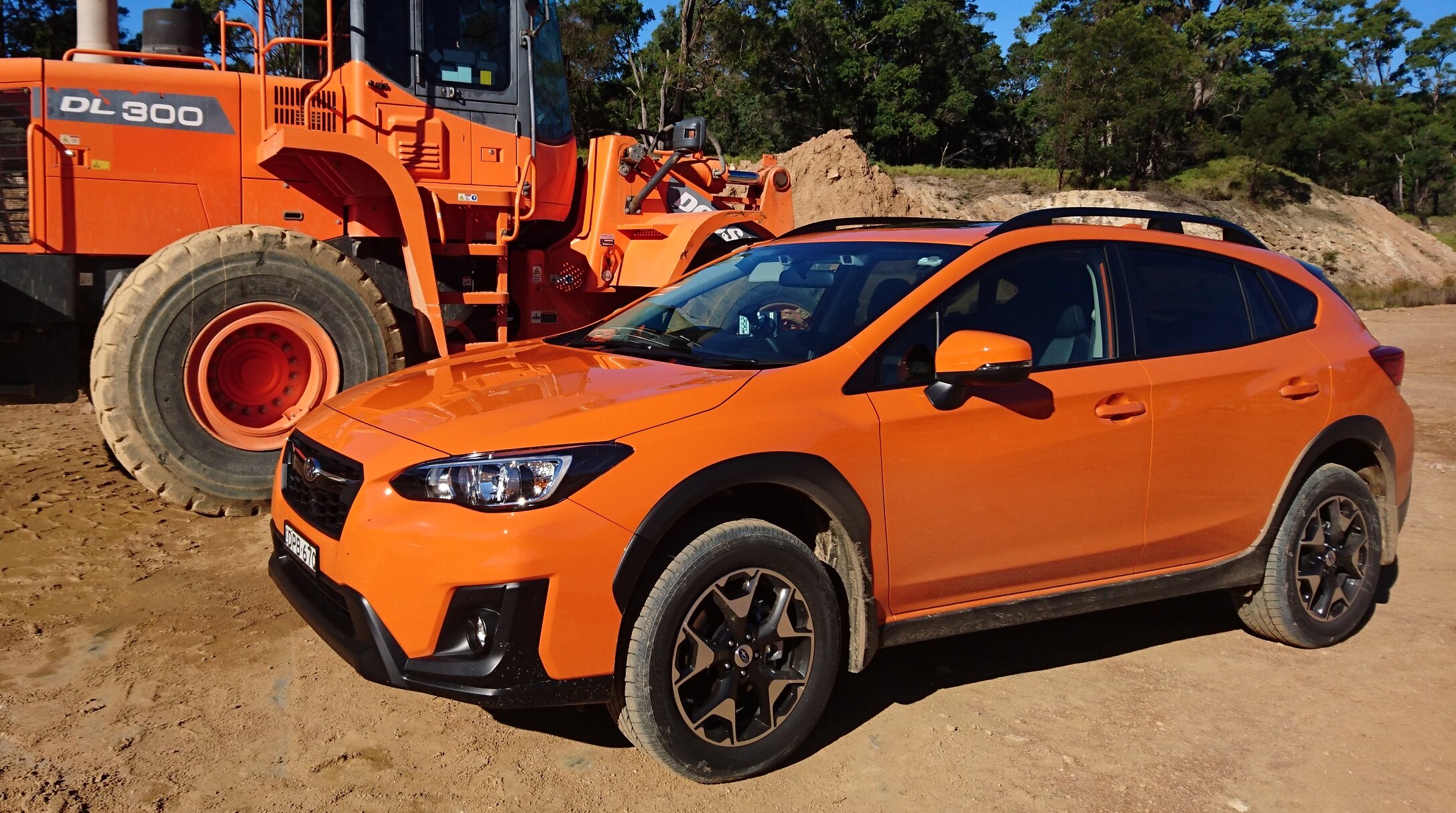
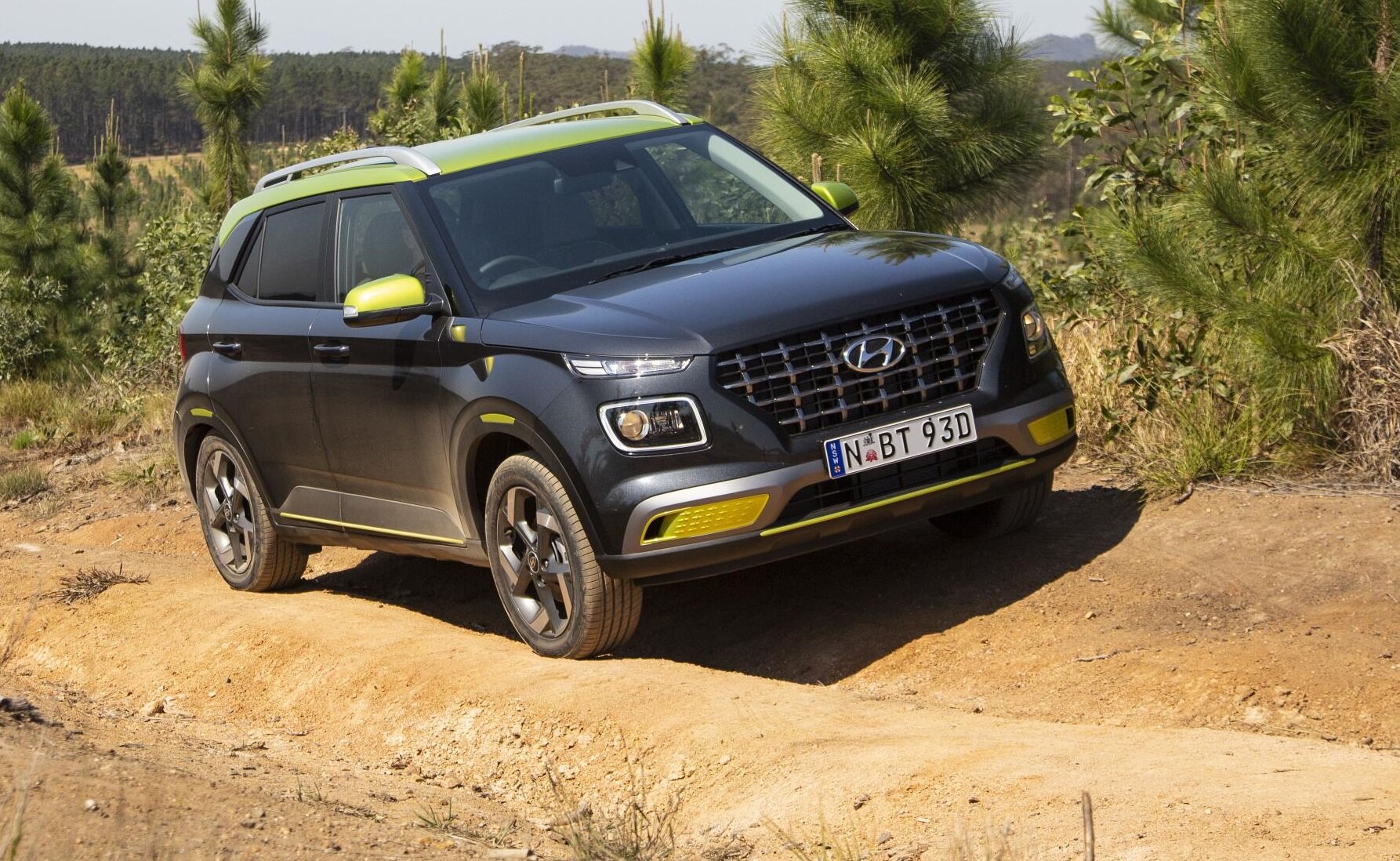


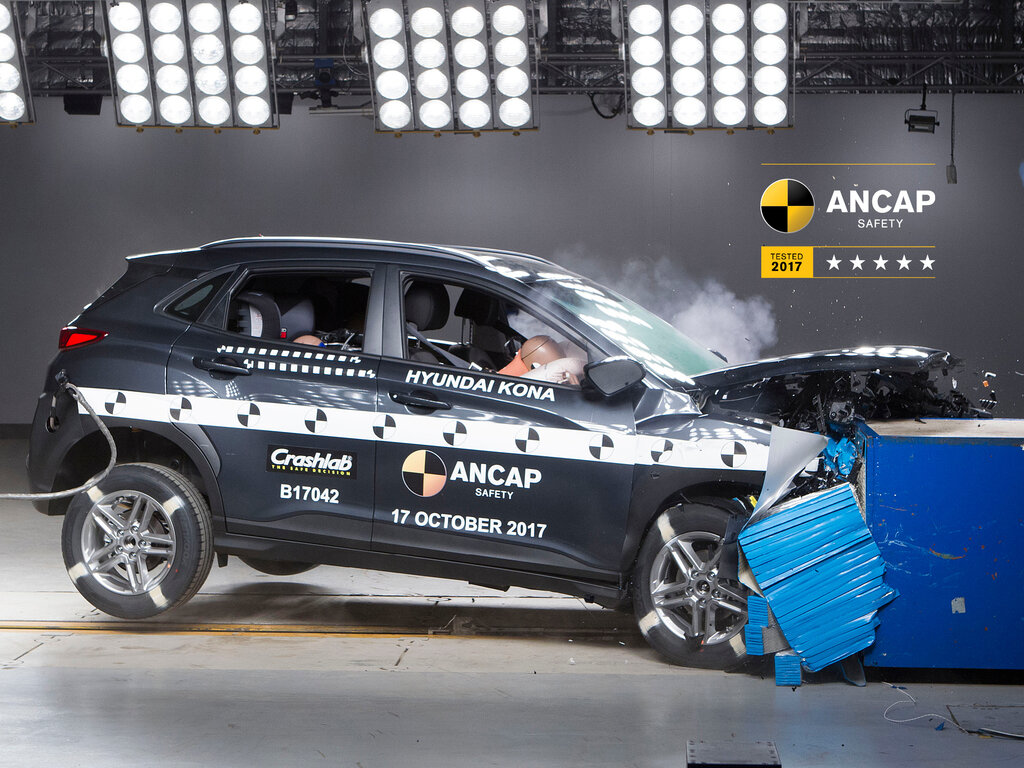
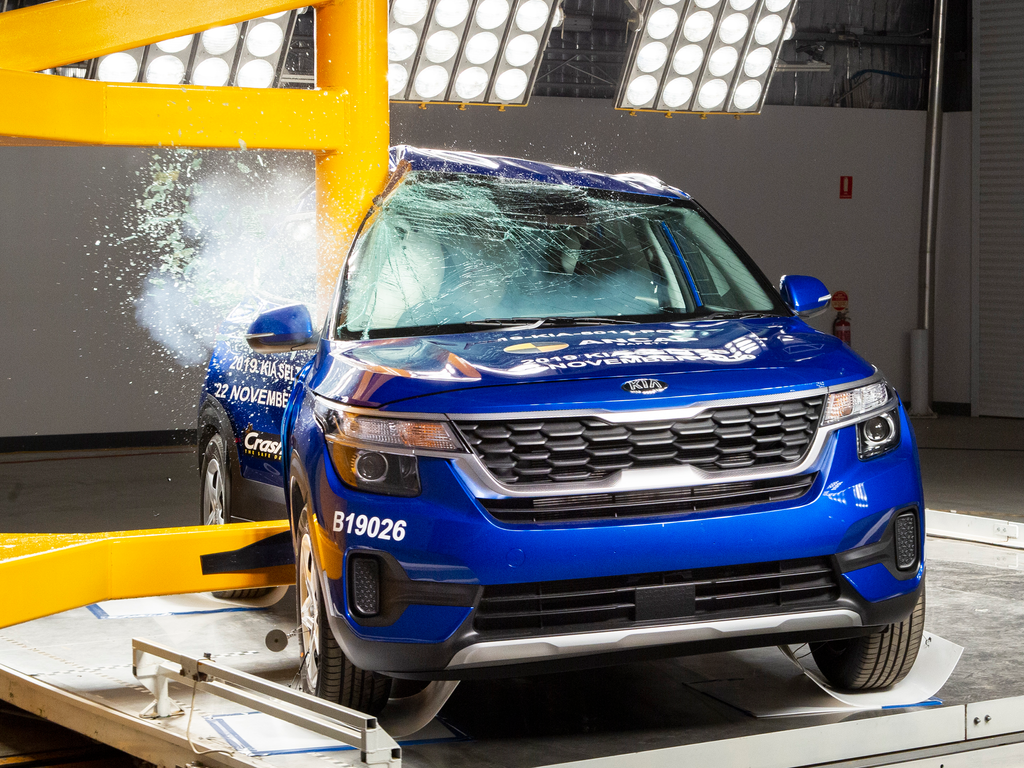
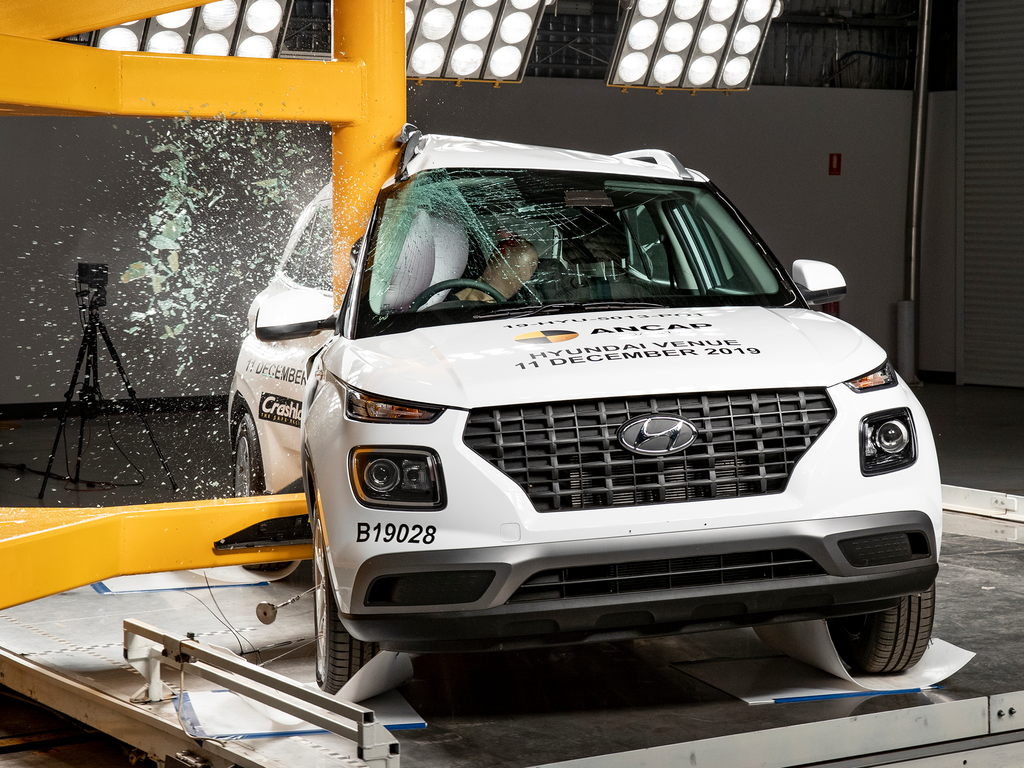
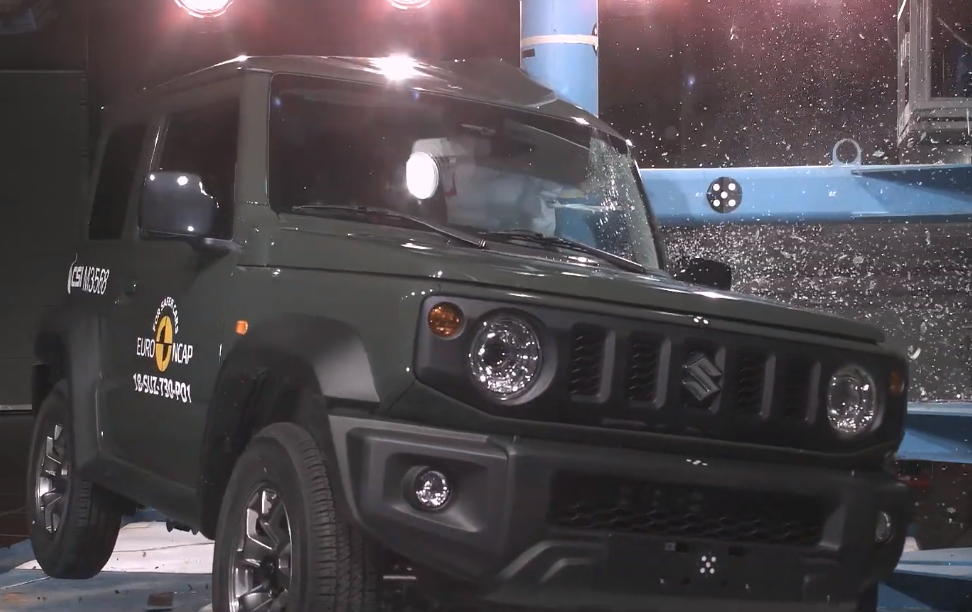


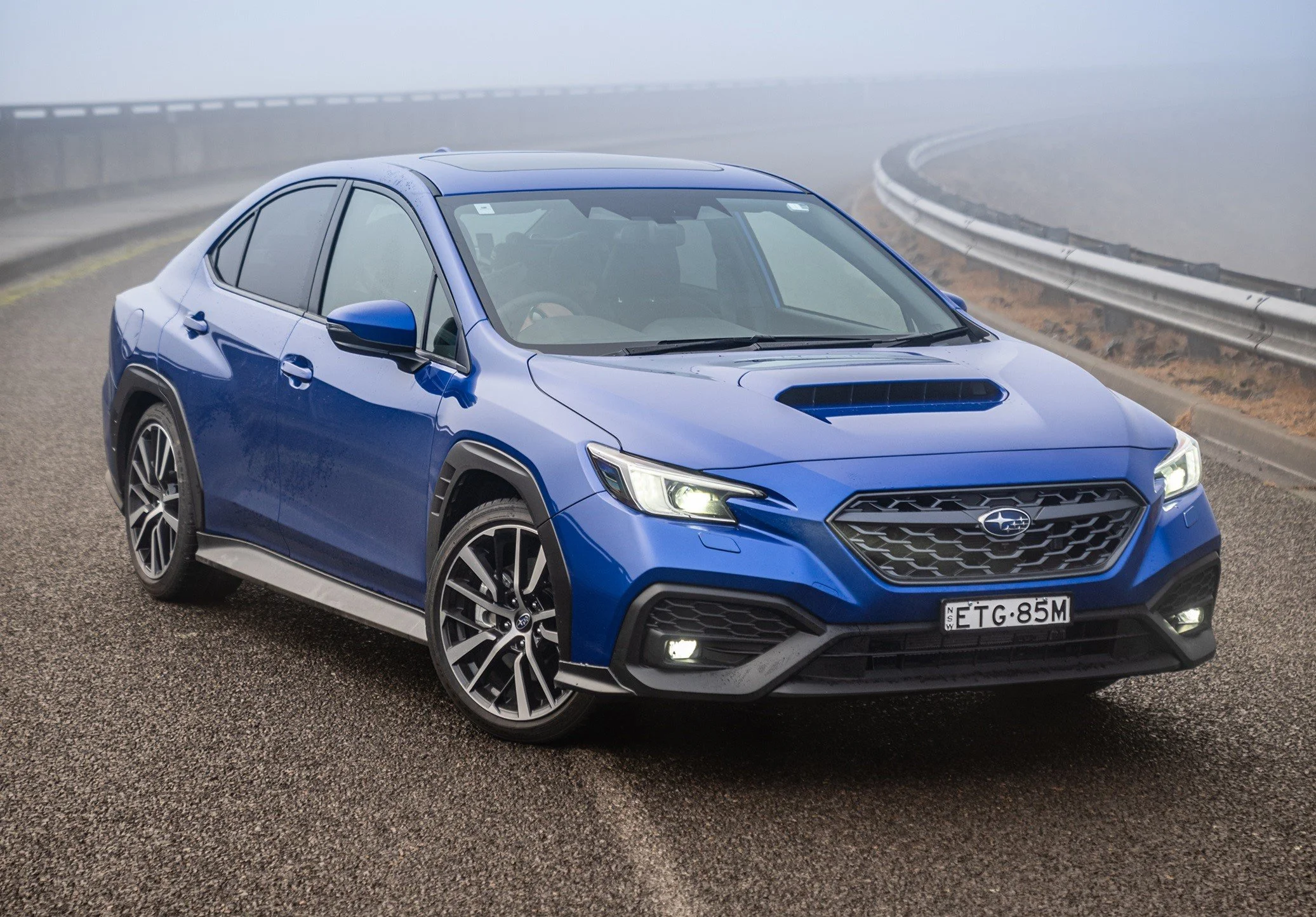






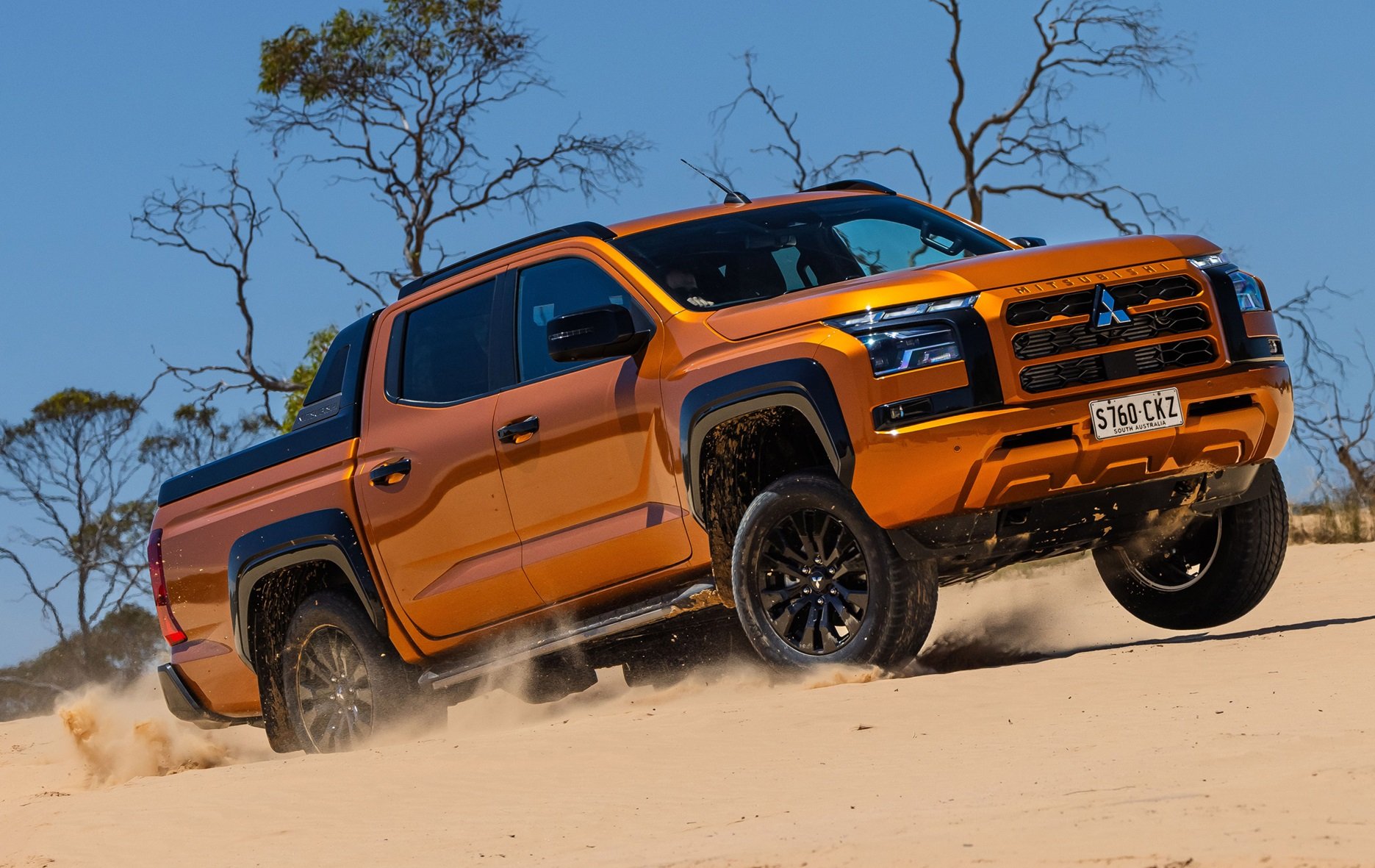
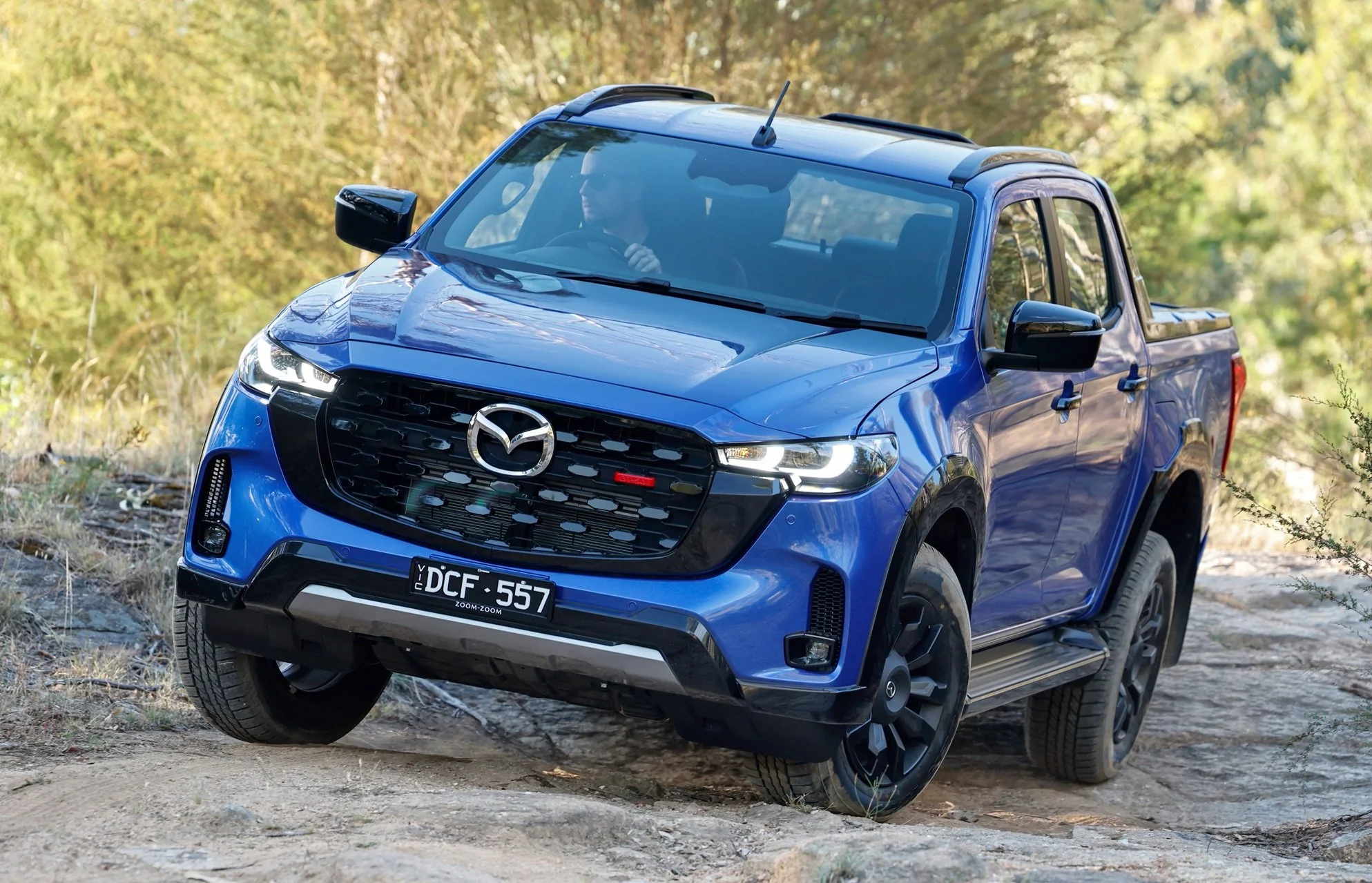

The new Santa Fe adds a hybrid powertrain to what has been one of Australia’s best-selling seven-seat SUVs. It offers premium European-style refinement and equipment you’d expect from prestige brands, keeping its value proposition and family appeal.